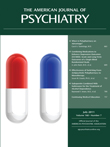This book is the autobiographical account of a woman who suffered observable melancholic major depression that was resistant to persistent and varied treatments with medications and psychotherapy but experienced rapid remission with ECT. First she tried psychotherapy and stoicism while receiving consistent support from family and a network of friends. Eventually she saw that her life was at risk from weight loss, sickliness, obsessive suicidal thoughts and plans, and a serious attempt at suicide. She refers to ECT as her “I choose to live” treatment.
The author shows courage and profound credibility in exposing herself to personal criticism by disclosing her experience. She elaborately and repeatedly details her own denial, dismissiveness, and absence of insight about her depression, her deliberate and hidden noncompliance with medication, and a compulsive drive for personal control that put her at odds with what her family, friends, and physicians advised. For example, she fibbed her way to discharge from the psychiatric ward while ill (p. 159). She details an enviable respect and courtesy that she now receives from others as well as abundant luxury and personal support in her life.
The author's descriptions of her subjective experiences are dramatically self-critical. Blaming self and not others is an aspect of melancholic depression. Although dramatic expressionism is uncommon in melancholia, the author was, of course, not melancholic when she wrote this book. I interpret this expressionism as part of her intent to be scrupulous and complete and to avoid understating the value of her life. She shows clear appreciation of the whole truth as the only truth.
Six years after her first episode, she experienced a recurrence. She asked herself, “How did I let this happen again?” Then she underwent another course of ECT, with full remission. However, what did not happen again was noncompliance, dismissiveness, resistance, or suicidal behavior. Still she blamed herself for the recurrence, although there was no apparent cause for blame.
The author's course is familiar, as it resembles the emotional turmoil that many psychiatric patients describe, not just from their condition but about being a psychiatric patient. Despite the complexity of her illness, the author describes her depression as being without the complications of bipolarity, psychosis, catatonia, or substances prescribed or craved. Specifically, alcohol is not involved, and this makes her circumstances more straightforward than those described by others.
Classical melancholia, as the author apparently experienced, differs in appearance from other types of depression. It typically is observable through psychomotor retardation, a mask-like face, impaired problem solving, loss of initiative and spontaneity, and sickliness. Indeed, the author mentions how other people described her appearance in this way to her. I still wonder how patients with melancholia experience it as different from reactive-type depression. Although the author does not focus on this, it is my concern as a clinician and not hers as a patient.
Several chapters describe the author's everyday interactions with family, friends, and coworkers. These sections serve to show the earnest, sincere, hardworking, and habitually successful nature of this patient and her husband. There is no character flaw, maladaptive habit, or stressful event at the root of melancholia. For example, the author describes a medical examination as an adolescent in which she felt humiliated, and there was no behavioral disturbance at the time. If such an event were to cause melancholia, we psychiatrists would be overwhelmed with patients suffering from this type of depression, but we are not. The author also puzzles over causality, particularly that her brother's horrific experience pulling burned bodies from rubble at the Pentagon following the September 11, 2001, terrorist attacks did not precipitate a depressive episode (p. 199). Indeed, one of her sisters suffers from early-onset recurrent melancholia.
This book is clearly written, well-organized, and polished throughout. It feels complete. The author does not gloss over the fears she had about undergoing treatment with ECT or its apparent side effects. She mentions memory gaps, mostly for the period during which she was receiving ECT, but they were minor, similar to general medication side effects. Moreover, many patients with an acute severe medical illness who undergo surgery or patients who receive treatment with potent psychotropic medications experience diminished memory or learning skills.
Although some technological medical details that are mentioned are not quite accurate, they are peripheral to the book's implications and value. Specifically, selective serotonin reuptake inhibitors were not yet available in 1979 (p. 79), and the Hamilton Depression Rating Scale is a tool for rating major depression severity rather than diagnosing it.
Likewise, the author does not detail the medications she received, but this text is not a clinical account for physicians. It is for the public, and I vigorously recommend it to students in healthcare fields, psychiatric patients, and families of patients. It should greatly help them to understand the nature of melancholia and the distress experienced by patients who suffer from the illness. Further, it should help them to understand ECT as a modern and safe lifesaving treatment that some patients need, analogous to a course of antibiotics to treat a serious infection. A course of ECT does not preclude further episodes, but with proper patient selection and a good method, full remission is usually obtained. Finally, this book was published in Texas, and I strongly recommend it to Texas state legislators. The state of Texas over-regulates ECT with unique requirements such as annual paid registration of each ECT device and mandatory reporting of details about each patient (excluding name) (
1). This overregulation obstructs access to ECT, and in my view, there is no reason for it.

